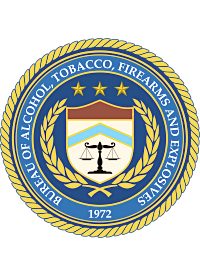
As the Bureau of Alcohol, Tobacco, Firearms and Explosives (still known as ATF) is contending with the findings of a House Oversight Report regarding the failure of its Project Gunrunner, new evidence indicates even more negative consequences of the government operation. It is now known that ATF weapons — which U.S. officials involved in the project allowed to be purchased by suspicious individuals in the United States and then “walked” to and distributed in Mexico — have been turning up in Arizona drug crimes.
As reported by Andrew Breitbart’s BigGovernment.com, Project Gunrunner:
was a project of the Bureau of Alcohol, Tobacco and Fireworks [sic]. In late 2009, the ATF was alerted to suspicious buys at seven gun shops in the Phoenix area. Suspicious because the buyers paid cash, sometimes brought in paper bags. And they purchased classic “weapons of choice” used by Mexican drug traffickers — semi-automatic versions of military type rifles and pistols. According to news reports several gun shops wanted to stop the questionable sales, but the Bureau encouraged them to continue.
ATF managers allegedly made a controversial decision: allow most of the weapons on the streets. The idea, they said, was to gather intelligence and see where the guns ended up. Insiders say it’s a dangerous tactic called letting the guns “walk.”
The Bureau’s project proved to be an abysmal failure for a number of reasons, including the fact that the very month in which the ATF permitted gun smugglers to purchase 359 guns, 958 people died from gunfire in Mexico. Likewise, the ATF’s “walking” guns have been linked to the death of U.S. Border Patrol agent Brian Terry.
An ABC15 news report from Phoenix now indicates that several weapons from local investigations of drug-related crimes have been tied to the ATF-approved sales permitted under Operation Fast and Furious, a.k.a. Project Gunrunner:
The ABC15 investigators uncovered documents showing [that] guns connected to at least two Glendale criminal cases and at least two Phoenix criminal cases also appear in the ATF’s Suspect Gun Database, a sort-of watch list for suspicious gun sales.
All four cases involve drug-related offenses. In one Glendale police report dated July 2010, police investigators working with DEA agents served search warrants at homes near 75th and Glendale avenues in Glendale, and 43rd and Glendale avenues in Phoenix as part of a “large scale marijuana trafficking” investigation.
Police investigators reported finding three guns inside the home, one of which appeared in an official ATF Suspect Gun Summary document in November 2009. ABC15 News continues:
In a separate Glendale Police Department case, dated November 2010, detectives discovered “bulk marijuana and weapons” inside a residence near 75th Avenue and Bethany Home Road in Glendale. Investigators recovered nearly 400 pounds of drugs and several firearms from the home.
One of the recovered weapons, a Romarm/Cugir WASR-10 rifle, appeared in an official ATF Suspect Gun Summary document in February 2010.
Recently, the House Oversight Committee released a report documenting a number of findings related to the failure of the Project Gunrunner program. The report included the testimony of four ATF agents who came forward, risking their careers, to speak out against the dangerous strategies being undertaken by the ATF.
The report implicates not only the ATF but also the Justice Department, which helped maintain records of the weapons that were permitted to “walk” and the crime areas in which they appeared.
As a result of the report, an investigation is being launched by the Department of Justice Inspector General; however, most analysts contend that the inquiry poses a conflict of interest, given the relationship between the DOJ and the ATF, and also the DOJ’s role in the implementation of the project.
Related article: U.S. Agents Targeted by Mexican Cartels




